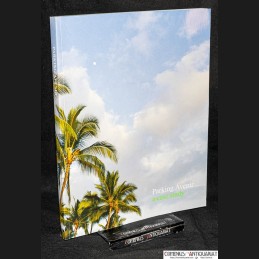Baumann, Leonie u.a.,
Parking Avenir. A case study. Berlin: Künstlerhaus Bethanien, 2004. [264] Seiten mit Abbildungen. Kartoniert. 4to. 616 g
* Deutsch und englisch.
Bestell-Nr.156020 | ISBN: 3-932754-50-6
Parking Avenir |
Kunstgeschichte |
Kuenstlerhaus Bethanien |
Ausserparlamentarische Opposition |
Kreuzberg
„Parking Avenir” ist eine Fallstudie über die Lebensnähe der Kunst und zugleich ein Lesebuch über Kreuzberg, den mythischen Stadtteil Berlins. Das Buch erzählt nicht nur in mehr als 150 Zeitungsausrissen, Briefen und aus Archiven geborgenen Pamphleten die Geschichte des Mariannenplatzes, einem in Liedern besungenen Zentrum alternativer Politikkultur. Es schildert diesen Ort auch als Schauplatz einer ebenso produktiven wie problematischen Beziehung zwischen Kunst und Welt. Denn die KünstlerInnengruppe RELAX (chiarenza & hauser & co) führt ihrem Publikum nicht nur den sozialen Handlungsort rund um eine Kunstinstitution vor. Es präsentiert mit „Parking Avenir" auch den Modellfall eines ortsspezifischen Kunstprojekts: Ein Kompendium voller Fakten und Materialien, ein Musterbuch planmäßiger Selbstreflexion. Dabei wird das Berliner Künstlerhaus Bethanien zum Fallbeispiel einer Kunstinstitution. Die Vielzahl seiner Projekte und Publikationen, die Gesetzmäßigkeiten seiner Verwaltung, die von außen herangetragenen Attacken der Politik lassen es wie ein exterritoriales Gelände erscheinen. Wie weit die Kunst von diesem speziellen Territorium aus den Dialog mit der Außenwelt zurückzugewinnen vermag, ist eine offene Frage von RELAX an den Kunstbetrieb der Gegenwart. Das Buch gerät so zu einem Exempel über den Zustand der Kunst. Und zur mutigen Selbstreflexion einer Kunstinstitution.
"Parking Avenir" is a case study of art's relevance to life, and is simultaneously a primer about Kreuzberg, Berlin's mythical district. In more than 150 newspaper clippings, letters, and pamphlets unearthed in archives, the book tells not only the story of Mariannenplatz — a centre of alternative political culture celebrated in songs — it also describes this place as being the scene of a relationship, as productive as it is problematic, between art and the world. For it is not only the social action space around an art institution that the artists' group RELAX (chiarenza & hauser & co) presents to its audience. With "Parking Avenir" it also presents the model example of a sitespecific art project: a compendium full of facts and materials; a sample book of systematic selfreflection. Thereby Berlin's Kunstlerhaus Bethanien becomes a case study of an art institution. The large number of its projects and publications, the legal realities of its management, and the attacks from the outside by politicians make it seem like extraterritorial terrain. How far art, operating from this special territory, can reinitiate the dialog with the outer world, is posed as an open question by RELAX to today's cultural Industry. The book thus exemplifies the condition of art, and represents the courageous selfreflection of an art institution.







 frais de transport
frais de transport
 Google Mail
Google Mail
